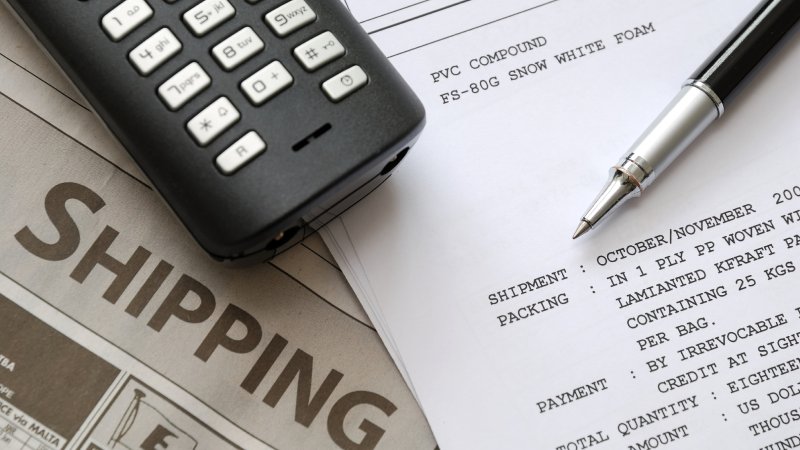The declared value is the maximum value of an item that can be covered by an insurance policy. It is also the value that will be used to calculate any potential liability in the event of a loss. The declared value should not be confused with the market value or replacement cost of an item, as these may be significantly different.

When you are shipping something, the declared value is the worth of the contents in the shipment. This is used to determine how much insurance to purchase and what fees will be incurred if the shipment is lost or damaged. The declared value should be accurate so that you are not over or under insured.
What Does Declared Value Mean on PSA?
When you are shipping something through the mail, you will often see the term “Declared Value”. What does this mean? The declared value is the maximum amount of money that the carrier will pay if your package is lost or damaged.
This is not insurance, but it is a way for the carrier to limit their liability in case something happens to your shipment. If you have a high-value item that you are shipping, it is important to declare its value so that you can be compensated if something happens to it. Otherwise, you may only be able to receive a partial refund or no refund at all.
When declaring a value, be sure to include the cost of replacement as well as any other associated costs such as shipping and handling. It is also important to remember that most carriers have a maximum liability limit, so if your item is worth more than that amount, you will need to purchase additional insurance.
How to Calculate Declared Value?
When it comes to calculating declared value, there are a few things you need to keep in mind. First, declared value is the maximum amount that an insurer will pay out in the event of a loss. This means that if your item is lost or damaged, you will only receive up to the declared value – no more, no less.
There are a few different ways to calculate declared value. One method is called the replacement cost method, which simply takes into account the current replacement cost of your item.
For example, if you have a piece of jewelry that you paid $500 for and it is now worth $1,000, your replacement cost would be $1,000.
Another way to calculate declared value is called the actual cash value method. This approach factors in depreciation and takes into account the current market value of your item. So using our same example above, if your jewelry was now worth $700 due to depreciation, your actual cash value would be $700.
Once you’ve decided which method you want to use, calculating declared value is relatively straightforward. Simply take the total purchase price of your item (or its current replacement/market value) and multiply it by a percentage – usually between 10-20%. This will give you your declared value amount.
For example: Let’s say you have a painting that you paid $5,000 for and it’s currently valued at $10,000 using the replacement cost method.
What is Declared Value Ups?
Declared value ups is when you, the shipper, declare the value of your shipment to UPS. This is important for two reasons:
1) In case your package is lost or damaged, you will be reimbursed up to the declared value; and
2) UPS will charge you an additional fee if your declared value exceeds their standard liability of $100.
So, how do you declare a value with UPS? When shipping with UPS, simply fill out the paperwork indicating the total value of your shipment.
You’ll need to sign this declaration, so make sure that you’re comfortable with the amount that you’re declaring. Keep in mind that you will be responsible for any taxes or duties on shipments valued over $2,500 – so make sure to factor that in when deciding on a declared value. Once you’ve completed the paperwork, give it (along with your package) to a UPS driver or take it to a UPS store.
That’s it! Your shipment is now fully insured against loss or damage up to the declared value.
Does Declared Value Include Shipping?
When you’re shipping something, the declared value is the maximum amount that the carrier can hold you liable for if your shipment is lost or damaged.
It’s important to note that the declared value doesn’t include shipping costs—it’s simply the value of the goods you’re sending. If you’re insuring your shipment, the declared value will be used to determine how much coverage you have.
For example, if you declare a value of $100 and your shipment is lost, you would be reimbursed up to $100 (minus any deductible). It’s important to choose a declared value that accurately reflects the worth of your goods.
If you underestimate the value, you could end up being underinsured; if you overestimate it, you’ll be paying more in insurance premiums than necessary.
Declared Value Vs Insurance:
Most people believe that declared value and insurance are one in the same. However, there is a big difference between the two when it comes to your belongings.
Here is a breakdown of each so you can be better informed when something happens to your stuff.
Declared value is what you say your item is worth when you ship it. For example, if you have a television that you paid $500 for, but it’s only worth $200 now, then you would declare its value as $200. The problem with declaring value is that if something happens to your item, the shipping company will only reimburse you up to the amount that you declared.
So, in our example, even if the TV was completely destroyed, you would only receive $200 from the shipping company. Insurance protects your belongings from damage or loss no matter how much they are actually worth. So, if you insure your TV for $500 and it gets damaged during shipping, you will receive $500 from the insurance company to replace it (minus any deductibles).
It’s important to note that most shipping companies only offer insurance up to a certain amount (usually around $500), so if your items are worth more than that, you will need to purchase additional insurance through a third-party provider.
When deciding whether or not to insure your belongings during shipment, always err on the side of caution and go with insurance over declared value. That way, if something does happen to your items during transport, you won’t be left out of pocket.

What is the Point of Declared Value?
There are a few different reasons why you might want to declare a value on your shipment. The most common reason is for insurance purposes. By declaring a value, you are essentially taking out an insurance policy on your goods in case they are lost or damaged in transit.
This means that if something does happen to your shipment, you will be compensated for the declared value of the goods. Another reason to declare a value is for customs purposes. When shipping internationally, you will need to fill out a customs declaration form which includes the value of your goods.
This is used to calculate any duties and taxes that may be owed on the shipment. In some cases, shippers may require that you declare a value even if you are not insuring the shipment or shipping internationally.
This is typically done when shipping high-value items so that the shipper can keep track of them and ensure they arrive safely at their destination.
So, in short, the main purpose of declaring a value is either for insurance or customs purposes (or both). However, there are other reasons why a shipper may require it as well.
Is Declared Value Worth It?
When it comes to shipping your goods, you have a few different options for how to insure them. You can choose to ship with declared value, which means that you will declare the value of your goods on the shipping paperwork.
If your goods are lost or damaged in transit, the shipping company will reimburse you up to the declared value. Declared value is a good option if you are shipping high-value items, or if you simply want peace of mind knowing that your goods are fully insured.
However, it is important to note that declared value does not cover all possible damages that could occur during shipment (such as normal wear and tear), and it also comes with an additional cost.
What Does It Mean to Declare Value?
When you declare value, you are stating how much something is worth. This can be done in terms of money, but it can also be done in terms of other things, like time or effort.
For example, if someone were to ask you how much your time is worth, you could say that it depends on the situation – if you’re just hanging out with friends, then your time isn’t worth very much.
But if you’re working on a project that’s important to you, then your time is worth a lot more. In terms of money, declaring value is usually pretty straightforward – whatever someone is willing to pay for something is typically what it’s worth. However, there are times when things aren’t so simple.
For example, when determining the value of a company’s stock, there are many factors that come into play and it’s not always easy to agree on a single number.
Ultimately, declaring value is about putting a price tag on something – whether that’s in monetary terms or otherwise. It’s important to be accurate and honest when doing so, as over- or under-valuing something can have serious consequences.
What Should I Put for Declared Value?
There is no one definitive answer to this question as the amount you declare for the value of your item will depend on a number of factors.
However, we can provide some guidance to help you make this decision.
The first thing you need to consider is what the item is worth to you. This is the most important factor in deciding how much to declare for its value, as you want to be sure that it is insured for at least its full replacement cost.
Next, you need to take into account any applicable insurance limits.
For example, if your homeowner’s insurance policy has a $1,000 limit for personal items, then declaring a value of $2,000 for your laptop would not be covered in the event of loss or damage.
Finally, you also need to factor in the deductible on your insurance policy. If your deductible is $500 and your declared value is $1,000, then you would be responsible for paying the first $500 of any damages or losses incurred.
In general, it is better to err on the side of caution when declaring a value for an item. It is better to have too much coverage than not enough.
Conclusion
When you’re shipping something, the declared value is the maximum amount of money that the shipping company will pay if your shipment is lost or damaged. The declared value is usually a percentage of the shipment’s actual value, and it’s up to you to decide how much coverage you need.




